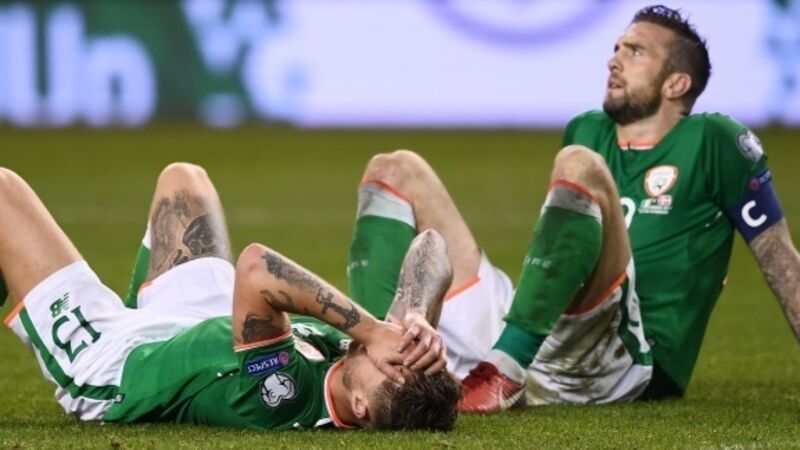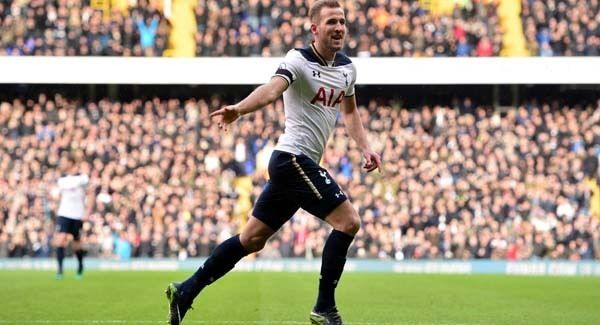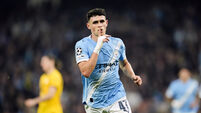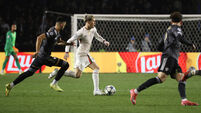Why birthdays are one of the big problems affecting Irish soccer

A few days after Roy Keane sat haplessly alongside Martin O’Neill, watching Ireland being torn apart by Denmark to miss out once again on another World Cup, numerous Dublin clubs were advertising for kids born in 2010 to try out for their U8 teams.
The trials understandably came in for criticism. What were they at, evaluating kids only six or seven years of age? Telling youngsters who may already have been with the club a few years that they wouldn’t be on the A team next year because a couple of new, better kids caught the eye at the trials? Informing other triallists that, sorry, they’d have to look elsewhere if they wanted to play first-team football?
But supposing you were to excuse or even agree with such a Darwinian approach and subscribe to the dubious notion of ‘natural talent’, there was likely to be another, though largely unnoticed, dynamic at work which would have made the whole process fundamentally flawed.
It’s a failing that football coaches and scouts, especially in this country, have been repeatedly guilty of and oblivious to for generations.
In fact, not until a Canadian psychologist called Roger Barnsley took his wife Paula and their two sons to a junior ice hockey game a little over 30 years ago was anyone aware of one of the most recurring phenomena in all of sport.
Upon reading the pen pics in the match programme, Paula looked up to ask her husband if he knew when these young men were all born.
Yeah, said Barnsley. Since they were all somewhere between 17 and 20, they’d have been born in the late ’60s.
“No,” said Paula. “What month?”
She showed him the programme, underlining the various dates with her finger. An inordinate number of the players were born in January, February, and March. Only a couple of players were born in October, November, or December.
When he got home, Barnsley looked up the birth dates of as many professional and underage elite hockey players as he could find.
Same story.
“In all my years in psychology, I have never run into an effect this large,” he’d tell Malcolm Gladwell for Gladwell’s book Outliers. “You don’t even need to do any statistical analysis. You just look at it.”
Gladwell did, attending the final of the 2007 Memorial Cup, the climax of the best junior ice hockey league in the world. To illustrate his point, he’d recount in Outliers the play-by-play for the first goal of the match, substituting the players’ birthdays for their names.
‘March 11 starts around one side of the Tigers’ net, leaving the puck for his teammate January 4, who passes it to January 22, who flips it back to March 12, who shoots point-blank at the Tigers’ goalie, April 27. April 27 blocks the shot but it’s rebounded by Vancouver’s March 6. He shoots! The defensive men February 9 and February 14 dive to block the puck while January 10 looks on helplessly. March 6 scores!’
Ten years on and you’d have found an even more extreme example by way of last month’s Ireland-Denmark World Cup qualifier.
‘Six minutes in and Ireland have a free kick on the halfway line. January 14 will take it. He launches it forward into the box. Denmark’s January 15 gets a toe to it but can only spoon it up in the air. Ireland’s January 1 gets his head to it. GOAL!! Ireland go in front!’
What a moment — albeit all too fleeting — it was. Robbie Brady’s floating free. Nicolai Jorgenson failing to clear it. Shane Duffy pouncing. The Aviva and the nation hopping. Had Ireland held or pushed on, the match programme would have been something to treasure for decades to come, rather than something to discard in disgust at the humiliation that instead ensued.
If you happened to keep that programme, though, and study its pen pics in a manner like Paula Barnsley many years ago, you’d probably question her and her husband’s thesis and certainly its validity regarding the Irish national soccer team of 2017.
Playing centre-half beside Duffy that night was Ciarán Clark, whose birthday is September 26. Playing just outside him was Cyrus Christie, whose birthday is September 30. Playing in front of them was Harry Arter who celebrates his birthday shortly on December 28. All three were born in the last third of the year; in Arter’s case, one of the last three or four days of the year.
But Clark, Christie, and Arter were all born in the UK. They all came through the UK system; Clark captained England at U18, U19, and U20 level. In the UK schoolboys and underage club football run along the same lines as the school year. September 1 is the equivalent of January 1. If you happened to be born on August 31, then you’re just as unfortunate as an Irish kid born on December 31 — a day over age. So Clark, Christie, and Arter were all born in the first third of the football year, not the last third.
Add it all up and as Table 1 shows, eight players (35%) of the 23-man match-day squad that Martin O’Neill picked for that second-leg qualifier against Denmark were born in the first month after the cut-off date. Eleven of the squad (48%) were born in the first quarter of the football year, meaning 18 of them (78%) were born in the first half of the year.

And most stunning of all, not a single player was born in the last four months of the football year. You read that right: While seven of our Irish-born players were born before February 3, not a single Irish-reared player had a birthday after Stephen Ward’s on August 30.
Once Seamus Coleman — whose birthday is October 11 — was ruled out through injury, there wasn’t another player who got game time over the rest of the campaign that was born in the last quarter of the football year, even though the distribution of the general population is evenly spread across the four quarters.
It’s called the Relative Age Effect, a phenomenon that smashes those romantic, lazy notions you’ve had that sport is life’s one great meritocracy, oblivious to class and locality, a sphere where ‘talent’ shines through and conquers all.
So what exactly is at work here? And is it still happening here, in this country? Is the next wave of Irish talent representative of the entire population or are we continuing to essentially discard young players who happen to be born in the last four months of the year?
It was while drooping out of the Stadion Miejski in Poznan after Ireland had been again outclassed at Euro 2012 that Laura Finnegan resolved that her PhD had to be something about Irish football, something that in some — perhaps small — way would make Irish football better.
As someone who grew up just outside Dundalk, the game had gripped her since she could remember. Her father had played goalkeeper for a local team and years later she’d stand between the same posts. When she came of age to choose a favourite team, she selected Aston Villa because of its considerable Irish contingent at the time, though when it came to choosing a confirmation name she’d take Dalian as a nod to a Mr Atkinson they had played upfront with Dean Saunders.
As a sports management lecturer in Waterford IT, Finnegan was aware that the Relative Age Effect in Irish football had been investigated before. David and Richard Butler in UCC had illustrated that back when August 1 was the cut-off date for Irish underage teams before it fell into line with the rest of Europe, 60% of all our U21 internationals capped from 1981 to 1994 were born in August, September, October, and November. (A more recent study by David Butler showed that two-thirds of a 2015 U21 squad selected by Noel King were born in the first half of the year).
But how prevalent was it throughout Irish underage football now? The answer: Very prevalent.
Finnegan investigated the Elite Talent Pathway (ETP) established by the FAI in 2006 and found that of the 1,936 14-year-olds who had been drafted into of the 12 regional ETP centres in the first seven years of the scheme, 38% of them were born in the first quarter of the year.
In contrast, only 12.6% were born in the last quarter of the year. And as usual, the poor December kid was particularly underrepresented, with a kid born a month later in January 4.5 times more likely to be selected (see Table 2).

The phenomenon was particularly rampant in Dublin. A whopping 44% of players representing the Dublin District Schoolboy League (DDSL) were born in the first three months of the year. Well-renowned nurseries like Cherry Orchard (52%), St Kevin’s (44%), Belvedere (44%), and Malahide United (43%) were particularly partial to kids born in January, February, and March.
As Finnegan observes, “That doesn’t leave much space on their panels for kids born in the last nine months of the year!”
In Larry Ryan’s look at Irish underage football in this paper earlier this week, a Leicester City scout, Billy Byrne, defended the traditional methods of producing and identifying talent, claiming talent was something “you either have or you haven’t”; he didn’t believe in the notion of training or training hours.
Byrne namechecked some of the aforementioned clubs particularly partial to first-quarter kids, saying they were “doing as much work in the academies as they are in England”.
In Ireland kids were used to competing to win. In England they were just competing to play. Why would we want to copy the England model? “When did they last win the World Cup?”
Unwittingly, Byrne articulated much of what is wrong with the mindset and development of Irish underage football. If talent is something you’re born with, well, it seems almost miraculously exclusive to those born in the first few months of the year.
England this year won the U17 and U20 World Cups and U19 European Championships, not least because, recently, the FA started tackling the Relative Age Effect. Meanwhile, we haven’t; mainly, as Finnegan’s and Butler’s research has suggested, we prioritise winning over development.
“We need to start a conversation, like looking at something like the [U14 national] Kennedy Cup,” says Finnegan.
“It’s the jewel, the pinnacle of Irish underage football, something everyone looks towards, which is great, and people are understandably quite territorial about it. But the danger then is you put such an emphasis on winning in the short term rather than long-term development.”
It’s not an uncommon phrase to hear in Irish football circles about how a coach went “with all the big fellas” for the Kennedy Cup, meaning slighter but more technically-sound players can be overlooked.
The same competition, as a matter of interest, has been won by the DDSL 33 times in its 42-year history. There are many and obvious reasons why it’s been so dominant, but its partiality for kids born earlier in the year shouldn’t be discounted as well.
The Relative Age Effect is in play much earlier than at U14 and the Kennedy Cup. It starts at U8 with something like those trials some Dublin clubs held last month. The January kid who has almost 12 months on a December kid is more likely to be stronger, faster, more cognitively and emotionally advanced.
They’ve probably had a bigger window watching the game as well, going out at the back practising and kicking with a vision of what it should look like in their mind.
And so, because we adults rarely look to see what month they were born, we tend to perceive the older kid as just simply more ‘talented’. Unconsciously we give them greater attention, more favourable feedback to the point it becomes a self-fulfilling prophesy. They get better coaching, make more teams, and as they go up the ladder, get exposed to better coaching and better players again.

Meanwhile, the slighter, younger kid isn’t getting the same encouragement, reinforcement, confidence. He’s more vulnerable to dropping out.
There are ways to tackle the problem.
Butler and Finnegan have questioned why we still have 10-year-kids playing on the same- sized pitch as adults which puts a premium on power and athleticism rather than skill and touch.
England used to be particularly susceptible to the Relative Age Effect. It’s why Alan Shearer as a schoolboy was overlooked by Newcastle; by virtue of being born in August instead of September, he was smaller and lighter than other kids in his age group. (Roy Keane, by the way, was an August child too, which made him one of the older — but still slighter — kids trying out for that U15 Irish squad, but also one of the youngest kids on the radar of the Brighton scout who deemed him too light to sign).
Fourth-quarter talents getting break abroad
Even as recently as 2009, a study found 57% of players at Premier League academies were born between September and December, while only 14% were born between May and August.
But it was around then that a club like Tottenham Hotspur became more aware of the phenomenon, remaining patient with fourth-quarter talents such as Kyle Walker, Danny Rose, and Harry Kane.

Seven-year-olds all train together. Likewise, kids at eight, nine, and ten. Then, once it’s your birthday, you move up to the next age-group, meaning at some point you’ve experienced being both the oldest and youngest player in your group.
A study of the German U17 elite league showed that while teams with a bigger representation of Q4 kids might not win their competition, they could remain highly competitive while successfully bringing ‘late developers’ along and ultimately through the system.
Belgium run late-developer squads parallel with their A underage teams. The Serbian team that topped our World Cup qualifying group gave game-time to five November-born players in their 1-0 win over us in the Aviva.
However, he biggest intervention of the lot seems to be simply awareness.
Finnegan has encountered a few barbs from fellow academics wondering why she’s researching what Barnsley first studied over 30 years ago, but her simple retort to that is because academia had failed to get the word out to the masses. She’s trying to change that. Data means power.
“It’s amazing the amount of coaches who have said to me, ‘I didn’t know of this phenomenon but now, I’m going to keep an eye on the smaller, younger kids.’ It gets them to reflect, ‘Well, why did that kid stand out to me?’”
Finnegan is also mindful that the Relative Age Effect hasn’t been cruel to just the December child. Often it hasn’t done the January kid many favours either.
“For years they can get away mostly on size and maturity without much technical development or instruction, but when their physical advantage evens out, they can then find themselves behind a particularly resilient fourth-quarter kid that hung on in there. They’ve nearly all made it that far in spite of the system rather than because of the system.”
With a better system seeing the bigger picture, maybe someday a kid born on December 31 will link up with one born in January for the goal that sends Ireland to another World Cup.













